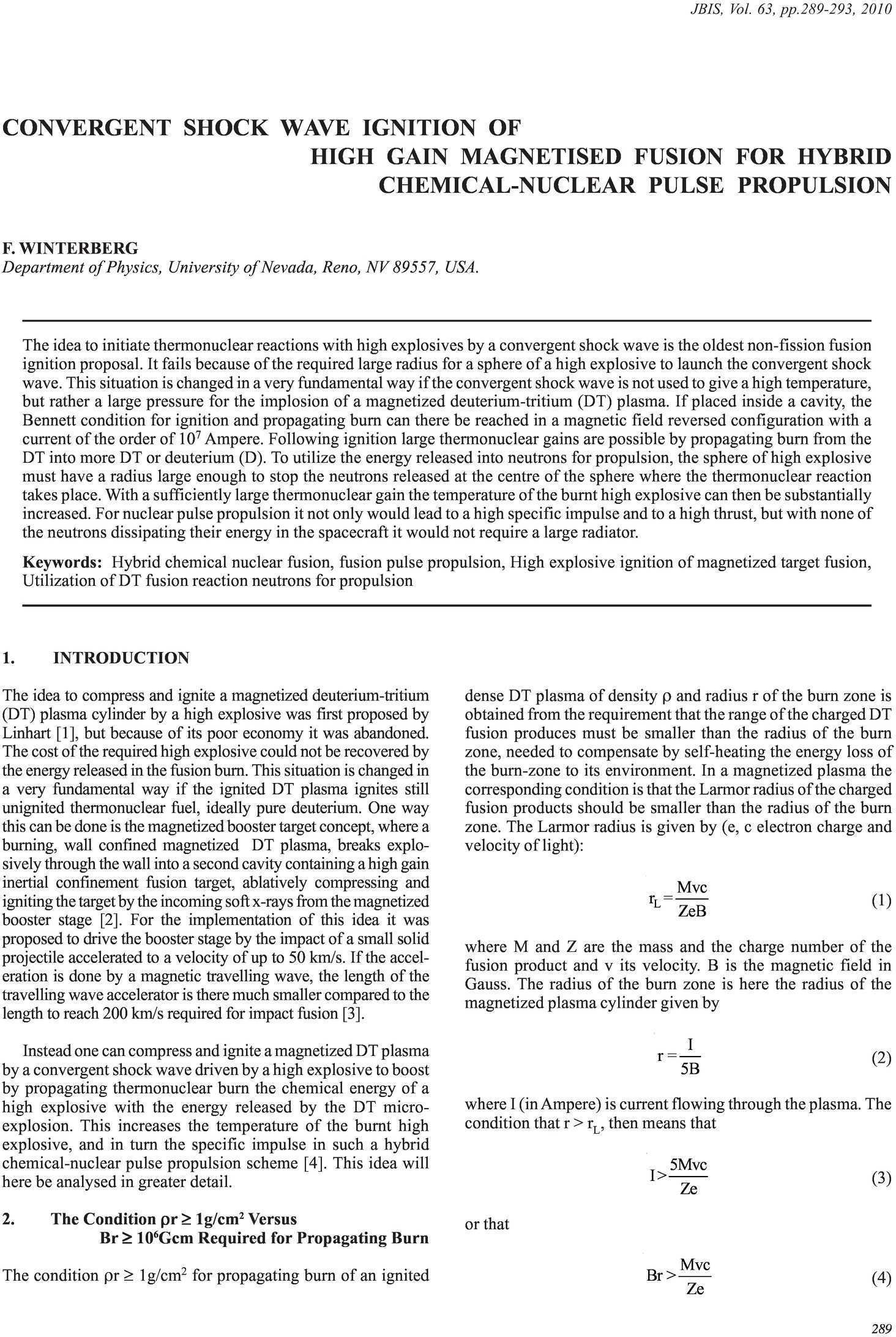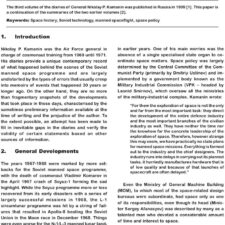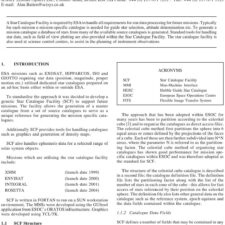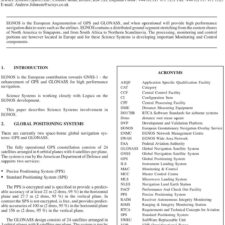Convergent Shock-Wave Ignition of High Gain Magnetised Fusion For Hybrid Chemical-Nuclear Pulse Propulsion
£5.00
F. Winterberg (2010), JBIS, 63, pp.289-293
Refcode: 2010.63.289
Keywords: Hybrid chemical nuclear fusion, fusion pulse propulsion, High explosive ignition of magnetized target fusion
Abstract:
The idea to initiate thermonuclear reactions with high explosives by a convergent shock wave is the oldest non-fission fusion ignition proposal. It fails because of the required large radius for a sphere of a high explosive to launch the convergent shock wave. This situation is changed in a very fundamental way if the convergent shock wave is not used to give a high temperature, but rather a large pressure for the implosion of a magnetized deuterium-tritium (DT) plasma. If placed inside a cavity, the Bennett condition for ignition and propagating burn can there be reached in a magnetic field reversed configuration with a current of the order of 107 Ampere. Following ignition large thermonuclear gains are possible by propagating burn from the DT into more DT or deuterium (D). To utilize the energy released into neutrons for propulsion, the sphere of high explosive must have a radius large enough to stop the neutrons released at the centre of the sphere where the thermonuclear reaction takes place. With a sufficiently large thermonuclear gain the temperature of the burnt high explosive can then be substantially increased. For nuclear pulse propulsion it not only would lead to a high specific impulse and to a high thrust, but with none of the neutrons dissipating their energy in the spacecraft it would not require a large radiator.





